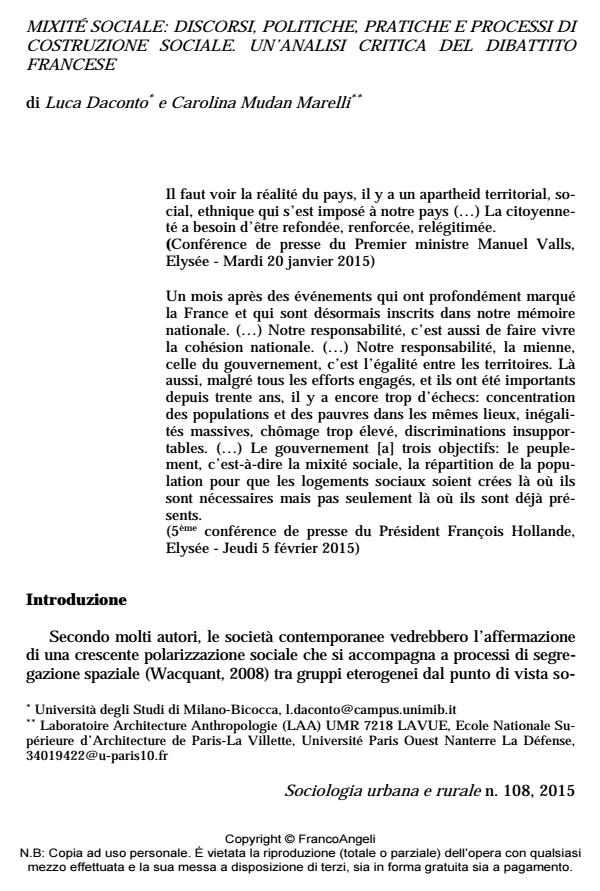Social Mix: Discourses, Practices and Processes of Social Construction. A Critical Analysis of the French Debate
Journal title SOCIOLOGIA URBANA E RURALE
Author/s Luca Daconto, Marelli Carolina Mudan
Publishing Year 2016 Issue 2015/108
Language Italian Pages 15 P. 19-33 File size 81 KB
DOI 10.3280/SUR2015-108002
DOI is like a bar code for intellectual property: to have more infomation
click here
Below, you can see the article first page
If you want to buy this article in PDF format, you can do it, following the instructions to buy download credits

FrancoAngeli is member of Publishers International Linking Association, Inc (PILA), a not-for-profit association which run the CrossRef service enabling links to and from online scholarly content.
The concept of mixité sociale has progressively been considered as an antidote to segregation processes in the contemporary urban policies. Reviewing the French debate on the issue, the article shows some critical aspects related to the category of mixité. On the one hand, the article highlights premises at the basis of the discourses on mixité concerning the effects of segregation and spatial proximity among heterogeneous groups. On the other, social diversity will be analysed as a category of public action, underlining some contradictory effects of mixité sociale in French urban policies. Finally, the article refers to the processes of social construction of mixité in gentrified areas with the aim of showing the ways in which the concept is renegotiated in the daily-life practices.
Keywords: Social Mix, Segregation, Proximity, Cohesion, Politique de la Ville, Gentrification.
- Un modello di sperimentazione di mix sociale nell'edilizia residenziale pubblica Maurizio Bergamaschi, Marco Castrignanò, in SOCIOLOGIA URBANA E RURALE 112/2017 pp.29
DOI: 10.3280/SUR2017-112004 - What is Quality Public Space? Antonio Famiglietti, in Quaderni di Sociologia /2023 pp.83
DOI: 10.4000/12eja
Luca Daconto, Marelli Carolina Mudan, Mixité sociale: discorsi, politiche, pratiche e processi di costruzione sociale. Un’analisi critica del dibattito francese in "SOCIOLOGIA URBANA E RURALE" 108/2015, pp 19-33, DOI: 10.3280/SUR2015-108002